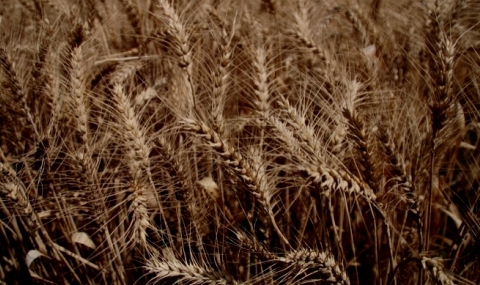Meiotic recombination impacts the evolution of organisms by generating a new genetic diversity through the shuffling of alleles via crossover (reciprocal exchange of large chromosomal segments) or gene conversion (Non-reciprocal exchange of small chromosomal segments). Crossover followed by chromosome segregation also enables the removal of deleterious mutations. Promoting genetic novelty together with the reduction of the mutation load are major benefits in evolution. In addition meiotic recombination contributes to genome stability ensuring the balanced segregation of paired homologs during gamete formation.
Meiotic recombination rates are highly non-uniform along the chromosome, being very low around centromeres and variable in distal chromosomal regions. Subtelomeric regions are highly recombinogenic in the male meiocytes of Arabidopsis but show low recombination rates in the female meiocytes. We are interested to understand the causes for the non-uniform landscape of meiotic recombination in plants. Meiotic recombination occurs in the context of chromatin, therefore we investigated both genetic and epigenetic factors that affect this process.
We have used mutants defective in cytosine methylation to study the effect of methylation on meiotic recombination. We showed that hypomethylation is correlated to increased rates of meiotic crossover in euchromatin but not in heterochromatin regions. These results were surprising as we expected the opposite, namely that the main effect of demethylation via the ddm1 mutation would be seen in the hypermethylated pericentric regions. This suggests that there are other “locks” that suppress recombination in the heterochromatin region. We also showed that the almost 2 fold difference in crossover rates in the male (high) versus in the female meiocytes is not due to differences in methylation. We are interested to understand the causes for these differences.
In order to understand what are the genetic and epigenetic features that characterize a crossover event. We analyzed crossover events in Arabidopsis using whole genome sequencing of F2 plants of a cross between Landsberg and Columbia. This enabled a high resolution identification of crossover breakpoint. Crossovers were more frequent than expected in promoters. Three DNA motifs enriched in crossover regions and less abundant in crossover-poor pericentric regions were identified. The A-rich motif was preferentially associated with promoters while the CCN-repeat and the CTT-repeat motifs were preferentially associated with genes. The CCN repeat, previously unknown in plants, resembled a crossover motif found in human, mice and Drosophila. Analysis of epigenetic modifications around the motifs showed, in most cases, a specific epigenetic architecture. A detailed investigation of cytosine methylation levels showed that it gradually decreased within ~2Kb of the motifs and was lowest at sites where crossover occurred. These results suggest a threshold model whereby the lower the methylation, the higher the chances to get a crossover event with crossovers happening at the lowest point of methylation. We also found additional epigenetic marks to be tightly associated with crossover. For example, the H3K4me3 modification peaked around the CCN repeat. We are interested to understand the mechanism that is linking between H3K4me3 modifications and the CCN repeat motif. In addition, nucleosome occupancy was lowest at the A-rich motif. In summary, the three crossover motifs analysed here are associated with epigenetic landscapes that correspond to open chromatin and contribute to the non-uniformity of crossovers in Arabidopsis.

The Dynamic Plant Genome

